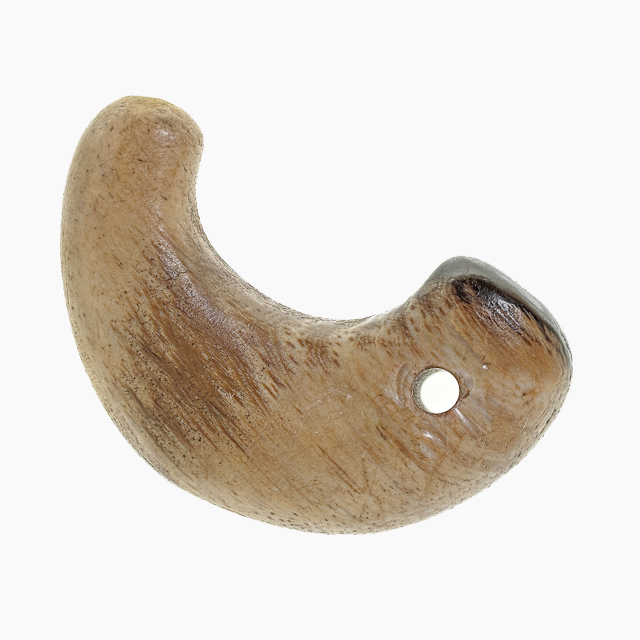Magatama, Japan

Transferred from the Wellcome Institute in 1985; 1985.52.957
This comma-shaped stone jewel from Japan is called a magatama (勾玉 or 曲玉). ‘Maga’ means curved or bent, and ‘tama’ means precious stone or gem. Magatama date back to the Neolithic period, and are typically made of stone, glass or jade. Their curved shape is thought to represent animal teeth and claws.
Magatama are both personal ornaments and highly valued ceremonial objects. Women once wore magatama in their hair, and as decorative arm and ankle bracelets. They were also attached to sacred bows, mirrors and swords, placed at temple shrines, and used as funerary objects. A source of spiritual power and good fortune, magatama can still be bought in Japan today.
Magatama also feature in Japanese mythology. According to the Kojiki, a collection of myths dating from the early 8th century, the storm god Susano-o terrorised his sister, the sun goddess Amaterasu, so much that she hid in a cave. Without Amaterasu the world became dark. In order to lure her out, the other gods hung a mirror, pieces of cloth, and many magatama jewels on a sacred evergreen sakaki tree outside the cave. Amaterasu looked out to see what the gods were doing, and as she emerged the world became light again.
